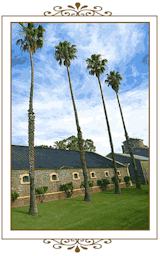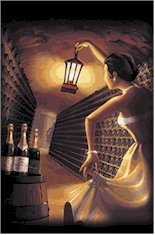


From its beginnings in the Barossa Valley in 1851, Seppelt has pioneered vineyard plantings in regions of southern and eastern Australia. Constantly innovating, Seppelt is creating new wine styles, new packaging and new ideas that position this outstanding winery as a world leader. Seppelt's Great Western Winery is famous for The Drives (the labyrinthine catacombs of sparkling cellars) and home to the two champion Shiraz wines, St. Peters of Great Western, and the world-renowned Show Sparkling Shiraz.

Great Western is now home to the Seppelt Victorian Premium Reserve range. These wines are carefully made at Great Western from vineyards in all the best wine growing areas of Victoria: The Yarra Valley, the Strathbogie Ranges, the Victorian Alps, Mornington Peninsula, Drumborg and of course, Great Western. It's also the place where Australia's most awarded sparkling wines are produced. Great Western is part of a wine grape-growing region which includes the Grampians in the West and Avoca in the East. The first grapes were planted in the latter part of last century as the gold mining boom receded and people looked for a more permanent means of livelihood.
Originally there were many small vineyards clustered around Great Western but by the early part of this century overseas and local demand for wine was declining and only the larger organised winemakers were able to compete. The memory of some of the early vineyards is perpetuated in the picturesque names still used on Seppelt labels, such as Salinger, Moyston and Chalambar - a tribute to the early pioneer vignerons.
Seppelt Great Western achieved much early fame from the variety known as Irvine's white (otherwise known as Ondenc) and small plantings still remain today. However the Great Western region has also forged a long and successful association with Shiraz. It is recognised that this part of Victoria holds some of the oldest plantings of pre-phylloxera root stocks of Shiraz. Today, Shiraz still forms the cornerstone variety of the House of Seppelt and has seen this region gain wide recognition as a producer of some of Australia's finest and most distinctive Shiraz. The highly acclaimed Shiraz from the Seppelt St. Peters Vineyard is a perfect example of a classic shiraz from the Great Western region.

The St. Peters Vineyard has been the spiritual home of the Seppelt Great Western vineyards for over a century. The heavy clay soils, cool summers and mature, low yielding vines combine to produce fruit with an intensity of flavour matched by a refined elegance, clear regional character and the structure necessary for extended cellaring. As wine writer Jeremy Oliver puts it "At its best, Shiraz from Great Western is perhaps the most drinkable in Australia. In boxing parlance it's a middleweight: still able to pack a punch of flavour, yet built for endurance."
The Drumborg Vineyard was planted in 1964 for the express purpose of providing Seppelt with a resource of cool climate fruit for premium quality table and sparkling wines. The Drumborg vineyard remains one of the most southern vineyards in mainland Australia. The varieties planted reflect the cool climate nature of the site with Pinot Noir, Pinot Meunier and Chardonnay the principle varieties along with Riesling and Sauvignon Blanc. The Glenlofty vineyard, 53km east of the Great Western Winery, was planted in 1995 to produce premium cool climate Shiraz and Chardonnay. The soil type is predominantly clay loam and the rolling hills, typical of the Great Western region, make this vineyard one of Seppelt's most attractive. Glenlofty is also producing parcels of high quality Cabernet Sauvignon, Roussanne, Marsanne, Sauvignon Blanc and Merlot.
Barooga is situated on the Murray River in New South Wales near the Victorian town of Cobram. A comparatively cool and relatively low yielding vineyard, with grapes ripening at a similar time to the Barossa Valley, Barooga is a major source of Chardonnay for sparkling and table wines. The deep, loamy well-drained soils produce fruit with ripe flavours and powerful varietal character. Recently Merlot, Shiraz and Cabernet from elevated vineyards with mineral soils are producing high quality fruit.
The Rutherglen region of North-Eastern Victoria was founded, as was much of this country, on the back of the gold mining boom of the mid nineteenth century. The region grew to be Victoria's most important wine-producing region before Phylloxera and the Bank crash of 1893 almost destroyed the district. The House of Seppelt has an association with the region spanning almost 40 years and produces a range of Liqueur Muscat and Tokay that are some of the districts finest.
